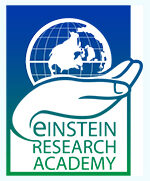The format of research and review articles can be found at the link below.
These articles are the GCSGD 2020 conference articles that were published in JEBAS.
Submission of Manuscript
- Submission of a manuscript to the JEBAS implies that the research work described has neither been published, nor it is under consideration for publication anywhere else and the manuscript has been approved by all co-authors.
- It is the responsibility of author (s) to obtain prior approval of the appropriate authorities of the institute where the work had been carried out. The publisher in no case, whatsoever, will be held legally responsible if there were any claims raised for compensation.
- If authors are using any copyrighted material (figure, table or text passages), they must obtain permission from the copyright owner(s) for doing that. Authors are fully responsible for the authenticity of the literature and originality of the data. The JEBAS will not be responsible for the plagiarism.
- We receive nominal fee from the authors as the manuscript handling charges after acceptance of their manuscript by our reviewer panel. The amount of fee payable is dependent upon several factors including author’s affiliation, manuscript length etc. However, publication of article in our journal is not contingent upon author’s capability to remit the fee.
Manuscript Preparation
Manuscript prepared following the guidelines strictly substantially reduces the time taken in editorial processing and results into rapid decision.
1. Manuscript should be submitted electronically as single word file embedding all the figures and tables in following format:
2. Font: Times New Roman; Font size- 14 for article title, 13 for section titles and 12 for text.
3. Line Space: Manuscript must be typed in Double line space.
4. Page setup: 1” margin in all sides.
5. English: The JEBAS is published in English and all manuscripts should be written in English. A poor level of English may slow, or even prevent, the publication of the manuscript.
6. The manuscript should be structured as word file in following pattern:
Title page: It should include article title, name of author (s), affiliations, full contact address of corresponding author with Phone, Fax and Email.
Next page will contain abstract of the article (150-250 words) followed by 5-6 keywords. The manuscript text will start from the subsequent page.
Body: The manuscript body will consist of
- Introduction: This section will give brief introduction of the research work while reviewing the latest research related to it. The introduction section should clearly mention the significance and objectives of the research work being reported.
- Materials & Methods: This section should be detailed enough so that the other interested researchers could repeat the experiments. In case of common methods used, only citation will be sufficient. However, if any modification in the established method was made, it should be clearly mentioned. Wherever applicable, it should also be mentioned that the ethical clearance was obtained for performing animal trials.
- Results: Authors should describe their important observations in this section. The data should have been analysed stastically
- Discussion and conclusions: In this section, authors should discuss their observations in view of already published literature. Variation from the published reports, if any, should be discussed logically giving all possible reasons and then conclusions should be made.
- After “Discussion and conclusions” section, authors can acknowledge the technical help/financial grant of their colleague/institutes etc.
Conflicts of interest and financial disclosures: Conflicts may be financial, academic, commercial, political or personal. Financial interests may include employment; research funding (received or pending), stock or share ownership, patents, payment for lectures or travel, consultancies, non-financial support, or any fiduciary interest in a company. When any author(s) has such type of financial or personal obligation, it is required to mention such potential conflict of interest along with financial interests and related affiliations (other than those affiliations listed in the title page of the manuscript) relevant to the subject of their manuscript. For all accepted manuscripts, author must declare such conflicts of interest at the end of the manuscript before the manuscript publish. Author without a conflict of interest should include a statement that no such conflicts exist.
- The referencing pattern should be like this:-
Journal article
Walkley A, Black IA (1934) Determination of organic carbon in soil. Soil Science 37: 29-38
Book chapter
Hall IR, Wang Y (1998) Methods for cultivating edible ectomycorrhizal mushrooms. In Varma A (Ed). Mycorrhiza Manual, Springer Verlag, Heidelberg, Germany
Book citation
Somasegaran P, Hoben HJ (1994) Handbook for Rhizobia: Methods in Legume-Rhizobium Technology. Springer, New York.
Online document
Karvy AA (2008) Seasonal outlook on chili. Karvy Special Reports, Karvy Comtrade. http://www.karvycomtrade.com/downloads/karvySpecialReports/ karvys/ SpecialReports20080908 01.pdf, accessed on 01 June 2010.4
The Tables and figures should be placed just after the “Reference section”. The figures should be clear with high resolution.
Checklist
As part of the submission process, authors are required to check off their submission’s compliance with all of the above said content, and submissions may be returned to authors that do not adhere to author guidelines.
